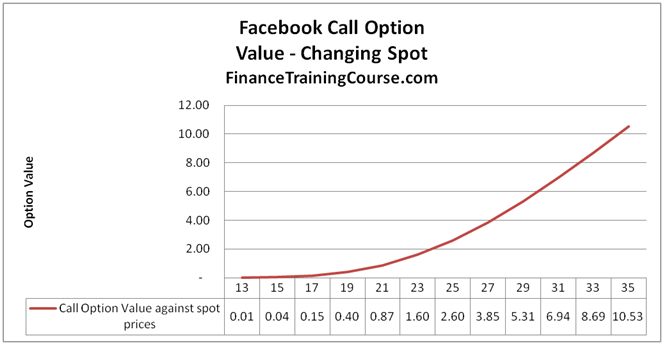Options trading involves the interplay between two parties: the buyer and the seller. Buyers seek to profit from potential price fluctuations of underlying assets like stocks or commodities without committing to an immediate purchase or sale. In this dynamic exchange, the spot price plays a pivotal role. So, what exactly is spot price in the context of option trading, and why is it so significant?

Image: financetrainingcourse.com
Definition and Significance of Spot Price
Spot price refers to the current market price of an underlying asset at a given point in time. It’s the prevailing price at which buyers and sellers are willing to transact the underlying asset for immediate delivery or settlement. Understanding spot price is essential because it serves as the benchmark against which the value of options contracts is determined.
For instance, if an underlying stock is trading at $50 per share, the spot price is $50. If a buyer purchases an option with a strike price of $55, they are essentially betting that the underlying stock’s price will rise above $55 before the option’s expiration date. Conversely, if the underlying stock’s price falls below $50, the option buyer may not exercise their right to buy the stock, as it would cost less to simply buy the stock at the lower spot price.
Factors Influencing Spot Price
Spot prices are constantly fluctuating due to a myriad of factors. These include:
-
Supply and demand: Supply-demand imbalances can cause sharp movements in spot prices. When the supply of an underlying asset exceeds demand, prices tend to fall. Conversely, when demand outstrips supply, prices rise.
-
Economic indicators: Economic indicators such as employment data, GDP growth rates, and inflation figures can affect investor sentiment and impact spot prices. Positive economic news tends to boost stock prices, while negative news can drive prices down.
-
Political events: Geopolitical events, government policies, and regulatory changes can have a significant impact on spot prices. For instance, geopolitical tensions in major oil-producing regions can lead to price spikes in oil markets.
-
Seasonality: Some underlying assets experience seasonal demand or supply fluctuations, which can lead to predictable seasonal patterns in spot prices.
Spot Price and Option Pricing
The spot price is directly reflected in the pricing of option contracts. The closer the underlying asset’s spot price is to the option’s strike price, the more expensive the option will be. This is because the probability of the option being profitable increases as the spot price approaches the strike price.
For call options, the spot price must rise above the strike price for the option to be profitable. For put options, the spot price must fall below the strike price for profitability. The spot price, therefore, serves as a gauge for determining the potential profitability of an option contract.

Image: www.adigitalblogger.com
What Is Spot Price In Option Trading
Impact of Spot Price on Option Strategies
Traders utilize options strategies to exploit spot price movements and minimize risk. Some common strategies include:
-
Call option strategy: Buying a call option gives the holder the right to buy the underlying asset at a specified strike price before the option’s expiration date. This strategy is typically employed when traders anticipate that the spot price of the underlying asset will rise.
-
Put option strategy: Buying a put option gives the holder the right to sell the underlying asset at a specified strike price before the option’s expiration date. This strategy is typically employed when traders anticipate that the spot price of the underlying asset will fall.
-
Hedging: Options can be used to hedge against potential losses in the underlying asset. For instance, a holder of a stock position can buy a put option on the stock to protect against potential declines in the stock’s spot price.
Understanding the spot price and its impact on option pricing






